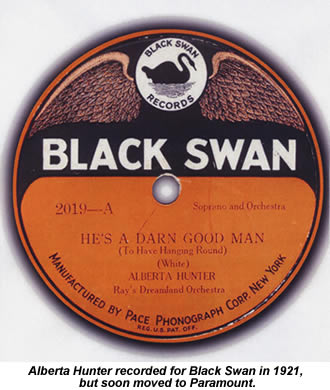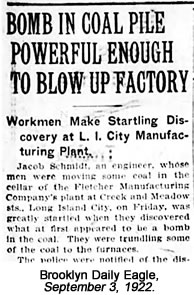 By this time, Waters had a good number of white fans as well as black ones, and that meant the Southern black theatres where the Troubadours played were often forced to make special arrangements. It went without saying that the races could not be allowed to mix, so special all-white shows were organised after the black audience had gone home. “We found ourselves applauded by the ofays in the theatre and insulted by them in the streets,” Waters wrote.
By this time, Waters had a good number of white fans as well as black ones, and that meant the Southern black theatres where the Troubadours played were often forced to make special arrangements. It went without saying that the races could not be allowed to mix, so special all-white shows were organised after the black audience had gone home. “We found ourselves applauded by the ofays in the theatre and insulted by them in the streets,” Waters wrote.
The owner of the black theatre in Little Rock, Arkansas, refused to follow this practice, despite the fact that Waters' many white fans wanted to see her performance there. He finally agreed to admit white people at the main concert, but - much to Waters' delight - ensured they got a taste of how blacks were normally treated. “The manager finally agreed to set aside a section of the house for them,” she recalled 30 years later. “But they weren't the best down-front seats. These were kept for the coloured patrons and, for once, the dominant race found itself segregated and in the rear.” This was the section blacks called “the crow's nest” a no-frills area as far from the stage as possible, where white-owned theatres generally confined their black customers.
Everywhere it went, the Troubadours tour won rave reviews and full houses from black and white audiences alike. The Booker Washington Theatre in St Louis reported record business, and the Wilmington Dispatch said Waters “backed all coloured competitors who have ever appeared here completely off the boards”. Louis Armstrong joined the Troubadours on-stage in New Orleans, where Waters became the first black woman - perhaps the first black artist - to sing on American radio. But still they were never allowed to forget that the South viewed them as second-class citizens.
This point was rammed home with particular brutality when Waters and her musicians reached Macon in Georgia, They made their way to the theatre, but found everyone there was strangely silent. “It was as though a sorrow too profound to express hung over them,” Waters says. “We weren't there long before we were told the truth. A coloured boy had been accused of talking back to a white man. For that, he'd been lynched, and the white mob that murdered the youngster flung his body in the lobby of our theatre. They threw it there to make sure many Negroes would see it. As it turned out, the house I was boarding at was next to the house of that dead boy's family. [...] I sat with them, prayed with them, tried to comfort them. But what is there to say to the mother of a lynched boy?” (12)
The Troubadours completed their tour in July 1922, and returned to New York with Black Swan in robust financial health. The company's 1921 accounts had shown first-half sales of only $3,970 and a first-half loss of $38,763, but Down Home Blues changed all that. Second-half sales shot up to $100,658, producing a six-month profit of $41,763. Black Swan was still only about one-tenth the size of industry giants like Victor, but it had managed to end its first year with a small surplus of $3,000, and that was no small achievement. Particularly, as New York Age reminded its readers, when every step along the way was met with “keen, unscrupulous, malicious and persistent opposition” from its white rivals.
There had been one other significant development while the Troubadours were on the road. In April 1922, Pace joined with a white businessman called John Fletcher to buy the bankrupt Remington Phonographic Company. This deal gave Black Swan its own Long Island pressing plant, which allowed Pace to increase production to 6,000 discs a day. This was the very pressing plant which Pace had been blocked from using in Black Swan's earliest days so the deal must have given him particular satisfaction (16).
Black Swan entered the Summer of 1922 with its own pressing plant, a newly-won national reputation, a headquarters building on Seventh Avenue, 30 staff, a full-time orchestra, seven district managers around the country and over 1,000 agents and dealers selling its wares. Competition from the white labels was fiercer than ever, though, as they became more and more determined to increase their own share of this lucrative new market. Paramount joined Okeh with a specialist race imprint of its own in 1922, Columbia the following year, and Edison in 1925. They all needed black talent, and they needed to find it fast.
Like any small label, Black Swan was able to create stars, but often found it difficult to keep them. Pace gave Alberta Hunter her first record deal, and saw her become one of the company's top sellers, but he was able to get only two discs out of her before Paramount poached her with a better deal. Trixie Smith, another discovery who sold well, managed 14 Black Swan sides, but by March 1923 she'd recorded her last session for the label too, turning up at Paramount the following year. Ethel Waters quit Black Swan a few months after Smith, recording briefly for Vocalion and Paramount before settling at Columbia.
“The major players were starting to sell records of black artists to black record-buyers,” Berresford says. “And one of the ways they found of getting one over on Pace was to steal all his artists. Pace was always running the business on a shoe-string, so it didn't take much in the way of offers and overtures from other record companies to steal his best artists.”
All this activity produced a dramatic shift in the industry's racial split. The author Ted Vincent has compiled a table showing that, in the period from July to December 1922, Black Swan had ten black blues artists on its books - as many as all the other labels combined (14). Just six months later, Black Swan's figure had fallen to eight, against its rivals' joint total of 31. Suddenly, the company's black artists were outnumbered four to one, and that was a situation which Pace felt he had to address.
